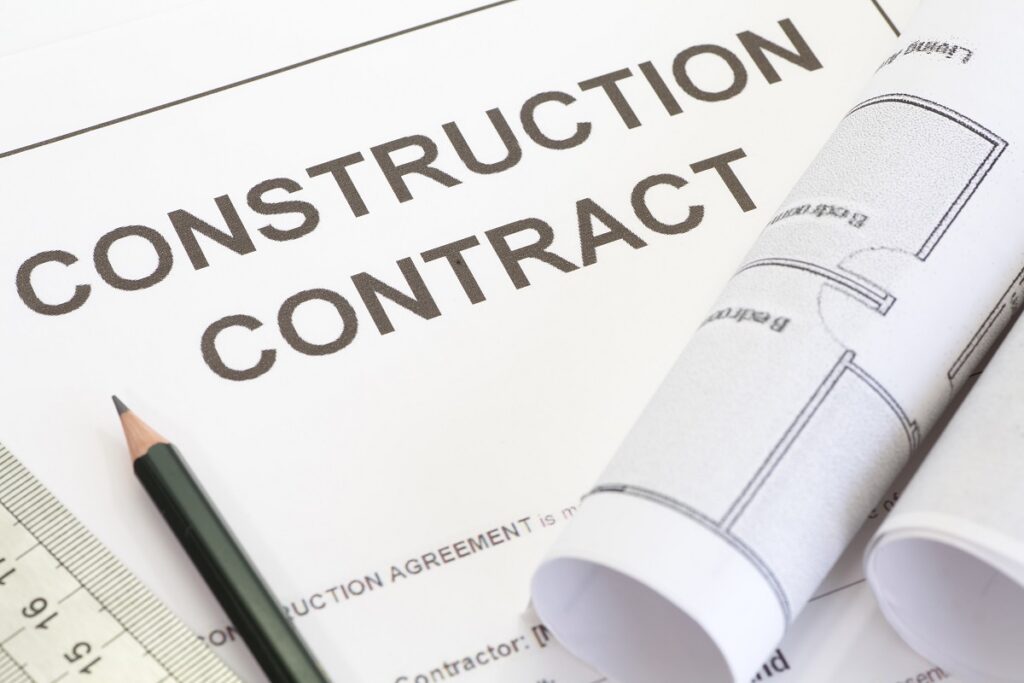
The American Institute of Architects (AIA) is the most widely used standard-form contract in the construction industry. AIA contracts establish the legal relationship between business owners, architects, and contractors for a building project. It provides a framework for each party’s roles, responsibilities, and obligations in a construction project.
This guide will help you understand the basics of AIA contracts, their purpose, and the types of AIA contracts commonly used in the construction industry.
What Is An AIA Contract?
An AIA contract is a standardized document used in the construction industry. It outlines the agreement between the project owner, architect, and contractor. These contracts are designed to protect the interests of all parties involved by clearly defining roles, responsibilities, and expectations.
From project inception through completion, AIA contracts offer a blueprint for project management, ensuring that each party understands their obligations and the procedures for handling disputes or changes to the project scope.
There are various types of AIA contracts tailored to different project sizes and complexities. As such, they are a versatile tool for effectively managing construction projects and minimizing legal risks.
Why Are They Important?
- Streamlined Communication: AIA contracts offer business owners a clear structure for communication and transparency with all parties involved. This ensures that expectations are set from the start, reducing misunderstandings and fostering a collaborative environment.
- Risk Management: These contracts are designed to distribute owner risks fairly among the parties, which minimizes liability. Should issues arise, the AIA contract outlines predetermined resolutions and procedures, offering a clear path forward. This reduces the potential for costly legal disputes and project delays.
- Quality Assurance: The AIA contracts require adherence to specified standards and codes. This ensures that the work done on a project meets all required quality benchmarks. For the business owner, this translates to the assurance that your construction project will be completed to a high standard.
- Financial Clarity: By clearly defining the budget, payment schedules, and procedures for handling changes to project scope, AIA contracts offer business owners financial clarity and predictability. This helps in budgeting and financial planning. It ensures that there are no unexpected costs or disputes over payments.
- Timely Project Completion: AIA contracts include provisions for project timelines and deadlines, which help ensure timely project completion. This is crucial, as delays can lead to lost revenue and increased costs. The contract outlines mechanisms for dealing with delays, keeping the project on track, and allowing business operations to resume as planned.
Types Of AIA Contracts
Below are the most common types of AIA contracts used in the construction industry:
A-Series: Owner/Contractor Agreements
The A-Series focuses on agreements between the owner and contractor, catering to various project delivery methods and payment structures. These agreements range in complexity to suit the scale of the project, from smaller residential or commercial projects to larger, more intricate developments.
Each contract within the A-Series is designed to reflect the unique needs of different project scopes. This ensures a tailored approach to contractor engagement.
B-Series: Owner/Architect Agreements
In the B-Series, the emphasis shifts to owner/architect agreements. This series encompasses a range of contracts that accommodate distinct projects, mirroring the diverse needs encountered in architectural planning and execution.
The contracts delineate the scope of work, compensation, and responsibilities. They facilitate a clear and efficient collaboration between the owner and the architect for projects of varying scales and complexities.
C-Series: Consultant Agreements
The C-Series extends to agreements that generally cover consultant work. This includes contracts between architects and consultants and those directly involving owners.
Reflecting the series’ versatility, the C-Series agreements are adaptable to different project delivery methods. They cater specifically to consultation roles and responsibilities within the construction and architectural sectors.
D-Series: Miscellaneous Documents
Documents within the D-Series serve as supplementary resources for construction projects. This series includes practical tools such as methods for calculating areas and volumes of buildings, project checklists, and guides to sustainable project design and implementation. These miscellaneous documents support project planning, execution, and sustainability efforts.
E-Series: Sustainable Design And Construction Exhibits
The E-Series is particularly dedicated to outlining roles and responsibilities in sustainable design and construction projects. It includes detailed exhibits for effectively implementing sustainable practices alongside provisions for Building Information Modeling (BIM) and the management of digital data.
These documents guide the construction industry towards more environmentally friendly and efficient project execution.
F-Series: Building Maintenance And Improvement
Focusing on the building’s lifecycle beyond construction, the F-Series addresses repair, maintenance, and improvement documents. Targeting short-term fixes and ongoing maintenance work, this series offers guidance on defining the scope, schedule, and compensation. It aims to ensure buildings remain in optimal condition post-construction.
G-Series: Contract Administration Protocols
The G-Series encompasses documents that facilitate effective contract administration. This includes essential forms such as change orders, applications and certificates for payment, requests for information (RFI), and certificates for substantial and final completion. These protocols are critical in maintaining project integrity, transparency, and progression from start to finish.
Conclusion
The AIA Contract Documents are a comprehensive set of standardized agreements and forms that support the construction industry’s various phases. From pre-design to project closeout, these documents provide clear guidelines, roles, and responsibilities for all stakeholders involved in a project.
By promoting efficiency, transparency, and accountability within the construction process, AIA contracts help ensure successful project delivery.
